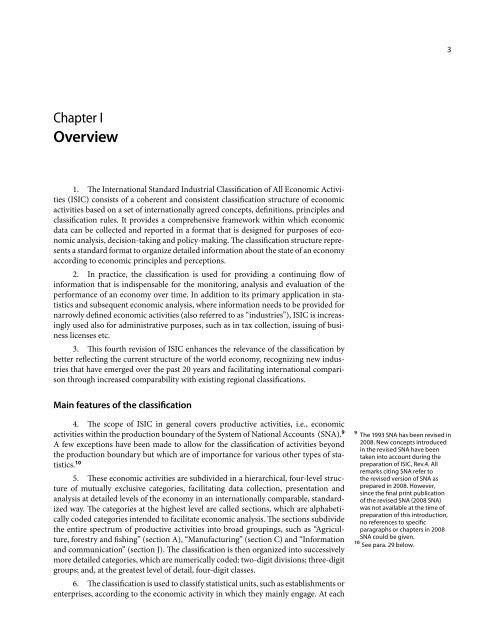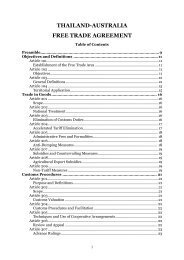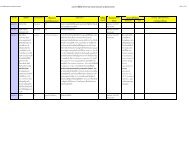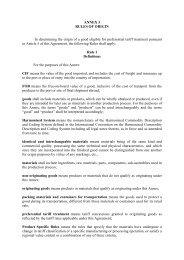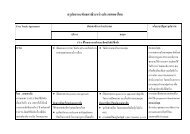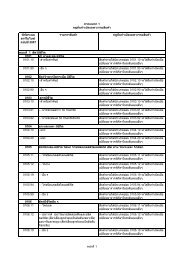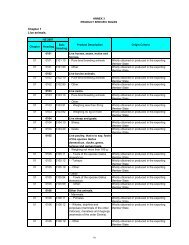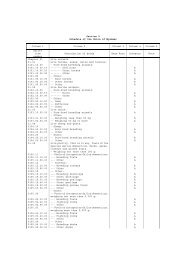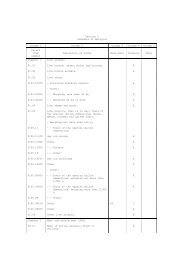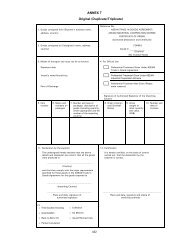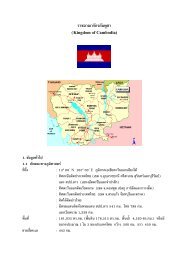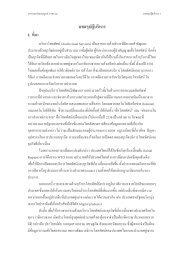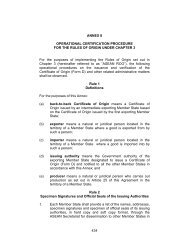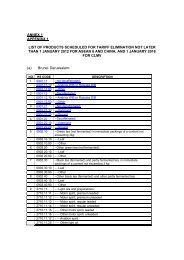International Standard Industrial Classification of All Economic ...
International Standard Industrial Classification of All Economic ...
International Standard Industrial Classification of All Economic ...
- No tags were found...
Create successful ePaper yourself
Turn your PDF publications into a flip-book with our unique Google optimized e-Paper software.
3<br />
Chapter I<br />
Overview<br />
1. The <strong>International</strong> <strong>Standard</strong> <strong>Industrial</strong> <strong>Classification</strong> <strong>of</strong> <strong>All</strong> <strong>Economic</strong> Activities<br />
(ISIC) consists <strong>of</strong> a coherent and consistent classification structure <strong>of</strong> economic<br />
activities based on a set <strong>of</strong> internationally agreed concepts, definitions, principles and<br />
classification rules. It provides a comprehensive framework within which economic<br />
data can be collected and reported in a format that is designed for purposes <strong>of</strong> economic<br />
analysis, decision-taking and policy-making. The classification structure represents<br />
a standard format to organize detailed information about the state <strong>of</strong> an economy<br />
according to economic principles and perceptions.<br />
2. In practice, the classification is used for providing a continuing flow <strong>of</strong><br />
information that is indispensable for the monitoring, analysis and evaluation <strong>of</strong> the<br />
performance <strong>of</strong> an economy over time. In addition to its primary application in statistics<br />
and subsequent economic analysis, where information needs to be provided for<br />
narrowly defined economic activities (also referred to as “industries”), ISIC is increasingly<br />
used also for administrative purposes, such as in tax collection, issuing <strong>of</strong> business<br />
licenses etc.<br />
3. This fourth revision <strong>of</strong> ISIC enhances the relevance <strong>of</strong> the classification by<br />
better reflecting the current structure <strong>of</strong> the world economy, recognizing new industries<br />
that have emerged over the past 20 years and facilitating international comparison<br />
through increased comparability with existing regional classifications.<br />
Main features <strong>of</strong> the classification<br />
4. The scope <strong>of</strong> ISIC in general covers productive activities, i.e., economic<br />
activities within the production boundary <strong>of</strong> the System <strong>of</strong> National Accounts (SNA). 9<br />
A few exceptions have been made to allow for the classification <strong>of</strong> activities beyond<br />
the production boundary but which are <strong>of</strong> importance for various other types <strong>of</strong> statistics.<br />
10<br />
5. These economic activities are subdivided in a hierarchical, four-level structure<br />
<strong>of</strong> mutually exclusive categories, facilitating data collection, presentation and<br />
analysis at detailed levels <strong>of</strong> the economy in an internationally comparable, standardized<br />
way. The categories at the highest level are called sections, which are alphabetically<br />
coded categories intended to facilitate economic analysis. The sections subdivide<br />
the entire spectrum <strong>of</strong> productive activities into broad groupings, such as “Agriculture,<br />
forestry and fishing” (section A), “Manufacturing” (section C) and “Information<br />
and communication” (section J). The classification is then organized into successively<br />
more detailed categories, which are numerically coded: two-digit divisions; three-digit<br />
groups; and, at the greatest level <strong>of</strong> detail, four-digit classes.<br />
6. The classification is used to classify statistical units, such as establishments or<br />
enterprises, according to the economic activity in which they mainly engage. At each<br />
9 The 1993 SNA has been revised in<br />
2008. New concepts introduced<br />
in the revised SNA have been<br />
taken into account during the<br />
preparation <strong>of</strong> ISIC, Rev.4. <strong>All</strong><br />
remarks citing SNA refer to<br />
the revised version <strong>of</strong> SNA as<br />
prepared in 2008. However,<br />
since the final print publication<br />
<strong>of</strong> the revised SNA (2008 SNA)<br />
was not available at the time <strong>of</strong><br />
preparation <strong>of</strong> this introduction,<br />
no references to specific<br />
paragraphs or chapters in 2008<br />
SNA could be given.<br />
10 See para. 29 below.


